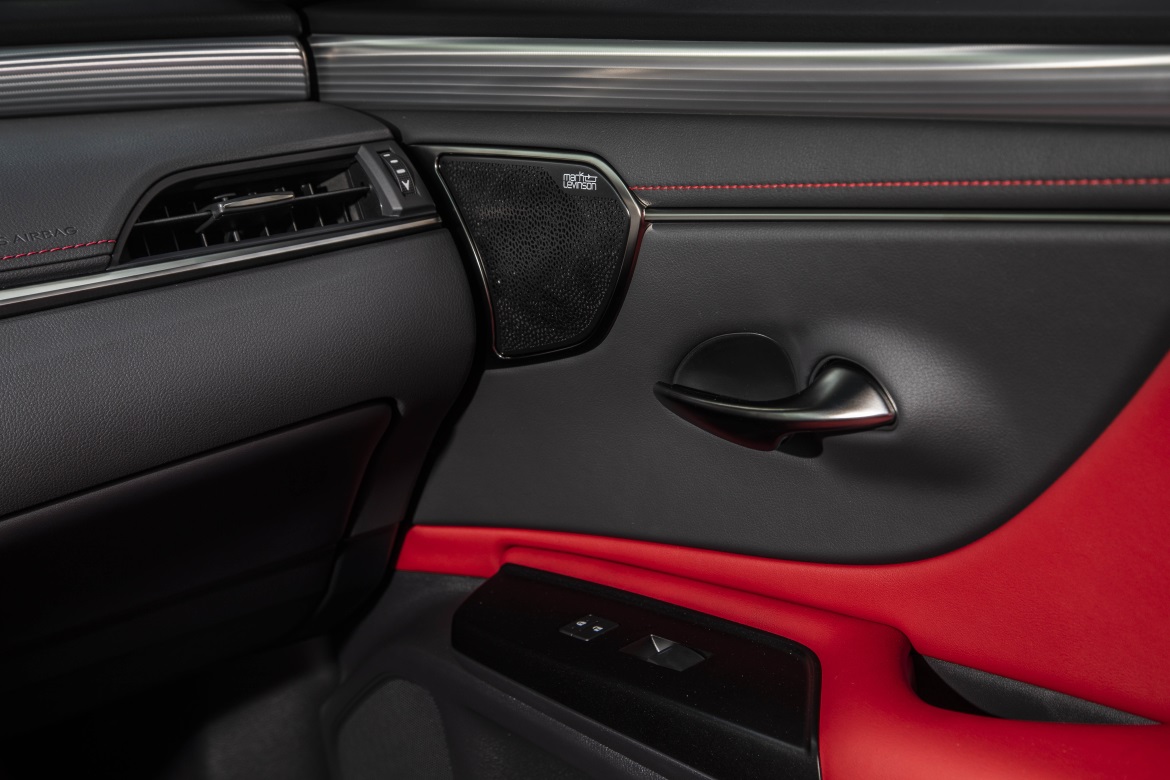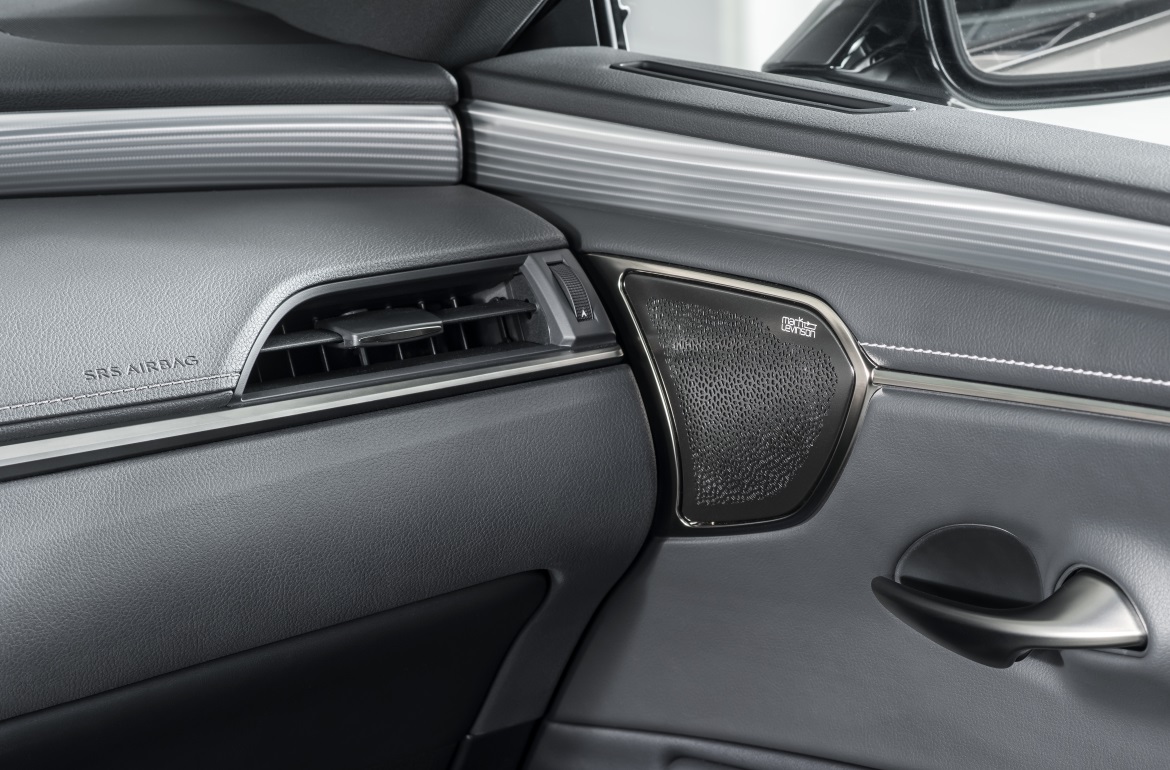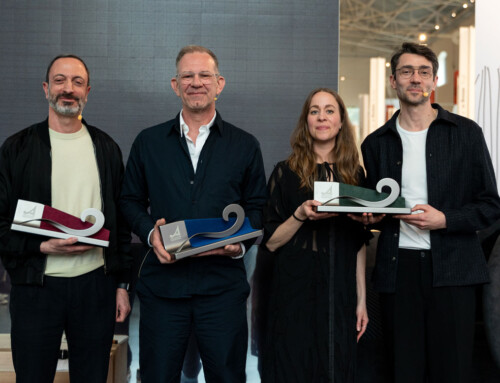The new ES F Sport features a door trim that is styled to imbue the interior with a truly lasting beauty, courtesy of a design inspired by the katana—one of Japan’s most treasured craft arts. The evolution of the Lexus car can be attributed to continuous addition of traditional Japanese craftsmanship techniques and details in the design concepts of its past models. The new Es F Sport follows this tradition with a door trim inspired by Hadori, a traditional polishing technique that applies a silvery wave-like finish to katana swords.
Incorporating a refined finish to the door trim of the Es F Sport was never going to be an easy process. However, Toshihide Maseki, who designed the car’s interior, stepped up to the challenge. “Looking at sketches for the new Es F Sport, I was struck by how sporty its design was; it was like nothing I had seen in previous models”, said Maseki. “Its weight had been shifted to the rear, giving it a sharp form. I immediately understood that my job was to achieve both dynamism and elegance in the trim design. When considering design concepts, I asked myself, what among traditionally Japanese craft arts features sharpness and dynamism, as well as beauty? That’s when I arrived at the katana”. Maseki traveled to Gifu Prefecture to make a stop in Seki, a city that has produced some of the finest katana in all of Japan. It is home to the Seki Smithing Museum, a treasure trove of information and items related to the 700-year history of Japanese swordsmithing.
Compared to the wide, heavy swords common in Europe, the Japanese katana may look somewhat delicate on first glance “I wanted drivers of the new ES to be able to feel this inner power, and in the process understand the timelessness of true beauty.” Once Maseki had settled on a concept and design direction for the door trim, he began developing a prototype. He first had skilled artisans craft the prototype by hand, so he could then replicate the design using a machine. However, Maseki encountered a problem. The machine was fed precise data related to the pitch and other details of the Hadori pattern, and yet it failed to produce results that in any way resembled the prototype. These “random lines” had been instinctively added by the artisans who created the prototype, based on their many years of experience and keen understanding of katana aesthetics. “We discovered that using a fixed pitch created patterns that were lacking in impact, while introducing a random algoritm, to the data led to patterns that were far more striking,” Maseki says.













